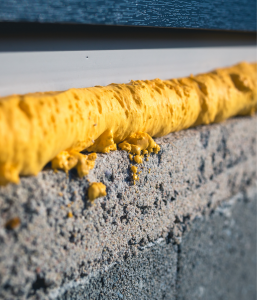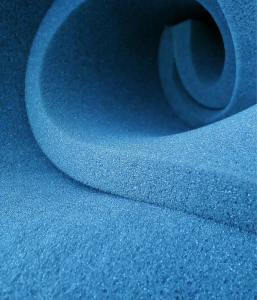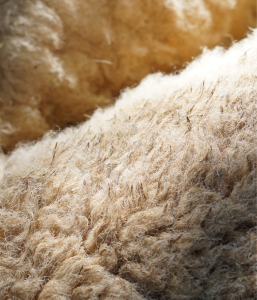Table of Contents
Whenever objects with different temperatures are in physical contact or are in the range of radiation influence they undergo heat exchange. Thermal insulation is the reduction of this heat transfer. It is achieved by creating thermal barriers between these objecs in case of thermal conduction or by reflection in case of thermal radiation.
In order to insulate an object from its surronding, heat exchange should be avoided as well by conduction as by radiation and convection.
Heat transfer by conduction is proportional to the difference of temperature, the thermal contact surface and the inverse of the materials thickness. It’s measured in watts-per-meter and per Kelvin (W·m−1·K−1).
The insulation capability of thermal insulation materials depends on their thermal conductivities and thickness. Insulation is accomplished by surrounding the object by materials having low thermal conductivity in high thickness.
Thermal insulation keeps cold material cold and hot material hot. For buildings it increases energy efficiency and allows to keep warm in the winter, or cool in the summer thus leading to a reduced carbon footprint
Insulation materials are used:
- for building and construction: buildings and pipes, hot water tanks etc
- for packaging (mainly for insulated shipping containers as part of the cold chain)
- for clothing and as natural animal insulation in birds (feathers) and mammals (fur)
- for insulating camping products such as sleeping mats and foam mattresses
Thermal conductivity
Thermal conductivity may vary from almost zero (for gases) to some hundreds of W/(m*K) for the highest conducting materials like metals. Gases have lowest thermal conductivities (air : 0.026 W/(m*K)) followed by liquids (0.1 -0.2 W/(m*K) for most organic liquids) and solids. Organic solids like polymers, bitumen, rubber have lower thermal conductivities (typically, 0.1 to 0.3 W/(m*K)) than inorganic solids like stones (marble, granite etc.) and concrete (typically 2 – 3 W/(m*K)).
Trapping gases (air) in solids make good insulation materials mainly if convection is limited by making small cells, best using organic solids having poor thermal conductivities. This principle is used for most insulating materials like foams (urethane foam, styrofoam (expanded polystyrene (EPS), cork), construction insulations (rock and glass wool, fibre glass and asbestos) and for clothings (like wool, down feathers, fleece).
Aerogels are a special type of insulating material. They are derived from a gel in which the liquid phase is replaced by a gas without changing the structure. Aerogels have extremly low density combined with low thermal conductivity and often high transparency.
Thermal transmittance, R- and U-value
The thermal transmittance or R-value is used to caracterise the insulating capacity of a material. It measures the resistance of (conductive) heat flow through a two-dimensional object like a wall, a window or an insulating panel. The R-value is the measured under steady state conditions and describes the heat flow between its hot and cold surface at a given temperature difference. Its unit is K⋅m2/W. The higher the R-value is, the better are the insulating properties.
The overall heat transfer coefficient or U-value is the inverse of R and its SI-units are W/(m2*K).
Thermal insulation by application sector
Depending on the application different type of insulating materials are used.
Building and construction
In former times, insulation for buildings were made from asbestos. This is now replaced by EPS (expended polystyrene), urethane foam, rock wool and vacuum isolated panels (VIP). Often, organic materials like wood, cotton and straw are used. Windows are isolated by two glass plates with an insulating air layer inbetween (insulated glazing).
For insulation of hot water tanks and pipes, mainly polyurethane foams are used.

Packaging

For packaging and mainly for insulated shipping containers (part of the cold chain), usually polylayered materials are used. They are composed of foams, thermal blankets (liners) and reflective layers. Often bubble wraps are used. A further concept is that of a vacuum flask (« thermos » flask).
Clothing and natural animals insulation
Clothing consists, as natural animals insulation of mammals (fur) and birds (feathers), of organic materials with air inclusions (cotton, wool, down feathers etc.)

Testing methods and devices
Different methods for measuring the thermal conductivity of insulating materials are available such as the heat flow technique (HFM – Heat Flow Meters), the guarded hotplate (GHP) and hot wire methods like the transient hot bridge (THB).
